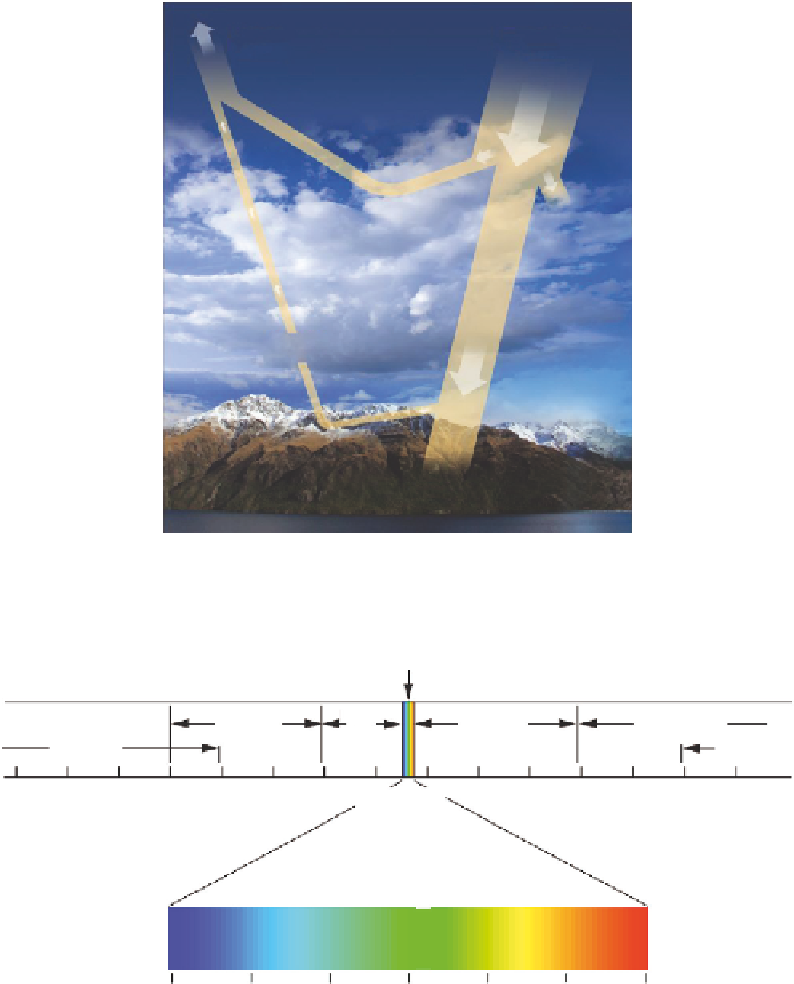Environmental Engineering Reference
In-Depth Information
Reflected shortwave
radiation
Incoming shortwave
radiation
Reflected by
clouds
Absorbed by
atmosphere
Reflected by
surface
Absorbed energy
FIGURE 12.6
Incoming (shortwave) radiation. (From NASA, “The earth's radiation budget” science mis-
sion directorate, National Aeronautics and Space Administration, 2010. Available at http://missionscience.
nasa.gov/ems/13_radiationbudget.html. With permission.)
Visible light
X-rays
Infrared
Microwave
Radio
waves
Ultraviolet
γ-rays
10
-8
10
-7
10
-6
10
-5
10
-4
10
-3
10
-2
10
-1
10
0
10
1
10
2
10
3
10
4
10
5
10
6
Wavelength in microns (µm)
0.4 µm
0.5 µm
0.6 µm
0.7 µm
FIGURE 12.7
Solar radiation spectrum. (From Malm, W.C., Introduction to visibility, National Park Service
Cooperative Institute for Research in the Atmosphere (CIRA), Colorado State University, 1999. With permission.)
The distribution of light in water is also measured using underwater photometers (or light meters).
These devices measure light at the surface and at depth as they are lowered through the water column.
Light typically decreases exponentially with depth. The relationship of light at the surface (
H
0
)
to light remaining at a given depth (
H
) can be described using Beer's law, also known as the Beer-
Lambert law or Lambert-Beer law, named after Johann Heinrich Lambert (1728-1777) and August
Beer (1825-1863), and is expressed as:
(12.1)
HHe
KZ
=
−
e
0

Search WWH ::

Custom Search